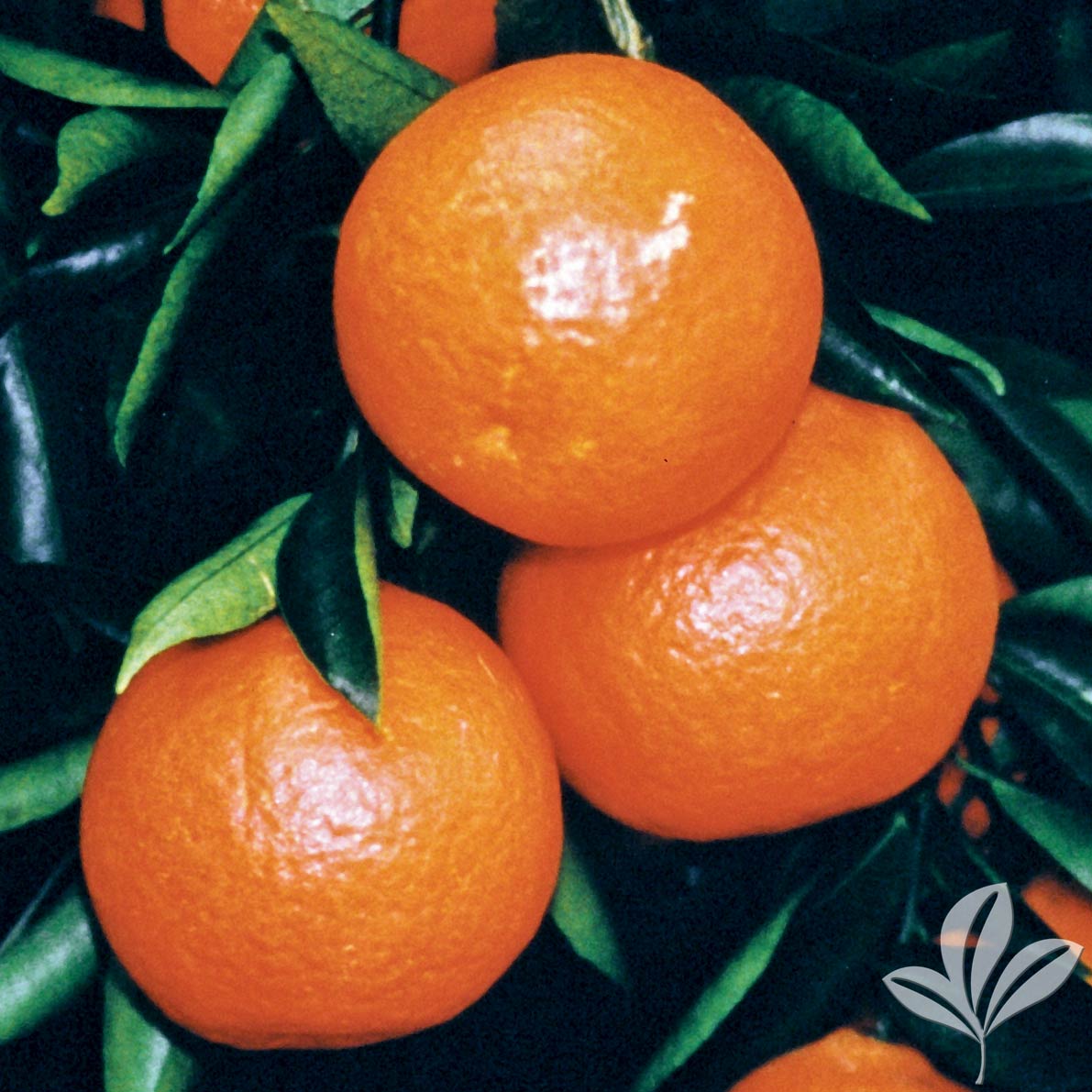Tangerine, Sunburst
Tangerine, Sunburst
SUNBURST TANGERINE - Tree size ranges from medium to large, with an attractive, red fruit that bears bountifully. Its few to many seeds mark it as the cream of the Tangerine crop.
Proudly grown in Louisiana.
CONTAINER SIZE - 3 gallon
SPACE REQUIREMENT - 12 -14 feet tall
YEARS TO BEARING FRUIT - Three to Four
POTENTIAL YIELD - 300 or more fruit at maturity. Commercially grown in Florida
PLANTING INSTRUCTIONS -
- Choose a location with the highest elevation possible that will provide your tree with good surface and internal drainage, and provide the most available sunlight. The ideal location will also be away from buildings and structures.
- At the time of transplanting, trim the head of the tree by approximately half it's size. Doing so will protect your newly transplanted tree from wind damage and it will be less shock will occur from being transplanted. The branches that come from the main trunk of the tree after grafting are referred to as “The Head”.
- Prepare a hole twice the width and the same depth of the container your tree arrives in. Do not dig your hole too deep as this may cause your newly planted tree to settle deeper in the soil and die. Fill the hole with water and allow all water to be fully absorbed into the earth before transplanting. If it takes 48 hours or more for the water to be fully absorbed into the earth, consider an alternative location, creating a raised bed or container planting.
- Remove your tree from the container. If a tap root has developed and is growing in a circle, cut the root at the point that it begins to coil. It will grow a new tap root. Separate and trim root-bound roots. Place the tree in the hole at the same depth that it was planted, making sure the top of the root ball is even with the ground level. Backfill the hole with soil to the ground level and lightly tamp soil around the tree.
- Using excess soil, create a water levee around the perimeter of the hole. Doing so will ensure better irrigation to your newly planted tree.
- Water weekly until established or in periods of extended drought. Trees planted in containers may require more frequent watering. Do not overwater.
FERTILIZATION - Fertilize annually for the best growth and production. Newly planted trees should be fertilized in mid-March after new growth is evident. Apply 1/2 pound of 8-8-8- or 13-13-13 on newly planted trees. Second-year trees can be fertilized in late January to early February. Apply 1 to 1 1/2 pounds of 8-8-8 or 13-13-13 per year of tree age up to 12 years, evenly distributing fertilizer under the canopy of the tree.
PRUNING AND TRAINING - First summer: Establish main branches if not already done so from the nursery and remove branches growing below the basic framework of the main branches. Shape the tree so that scaffold branches will be well distributed. After selecting and establishing scaffold branches, pruning is selective and done to thin thick growth from fruit-bearing trees. Fruit-bearing trees should be pruned in January and February.
COLD PROTECTION - Protect from hard freezes (5 hours or longer below 20 degrees). DMaintain bear ground free of mulch and grass under citrus trees to allow warming of the surrounding soil. Bare ground is warmer during a freeze. A frame made to cover the tree can be constructed out of clear plastic. Open clear plastic covering at mid-day to release heat. The grafted union on the trunk can also be wrapped to protect the trunk in the event the top of the tree suffers from freeze damage.
Couldn't load pickup availability


